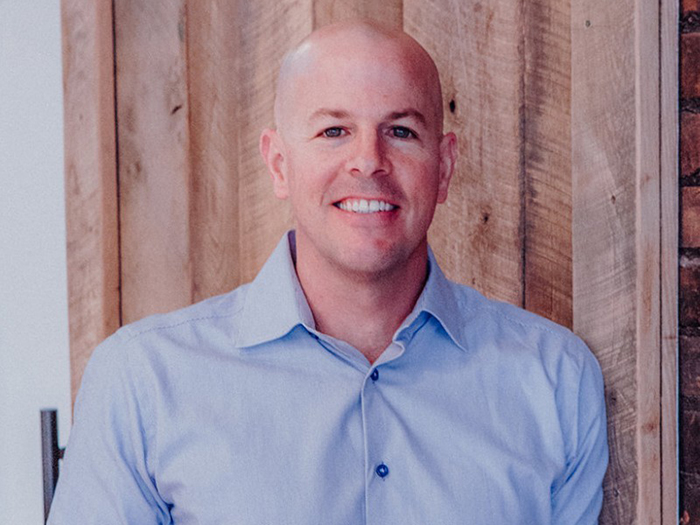Business Stressors Move the Workers’ Compensation Needle

A new survey reveals unprecedented levels of uncertainty among C-suite executives, with 99% of business leaders planning to increase safety investments in 2025 as they seek greater control over workers’ compensation costs and embrace self-insurance models. According to Sentry’s C-Suite Stress Index, economic volatility and workforce challenges are driving fundamental changes in how companies approach risk management.
The current economic climate has created what Jeff Cole, AVP of National Accounts at Sentry, describes as “a deep amount of unrest among the C-suite executives that we surveyed.” This turbulence stems from multiple converging factors that have disrupted traditional business planning.
“What’s interesting is what has happened in the past six to nine months with the bargaining tactics of our current administration,” Cole explains. “These have created significant uncertainty in both the global and U.S. economies, and most CFOs aren’t fans of uncertainty.”
The impact on financial planning has been particularly acute. CFOs, who typically prefer predictable outcomes, now face scenarios where their forecasts could be off by double digits rather than the traditional margin of error. “CFOs prefer predictability. If they’re going to be wrong in their forecasts, they want to be wrong by 0.1%, not by 10% or 15%,” Cole notes.
Simultaneously, workforce challenges have compounded these concerns, especially in manufacturing where remote work isn’t feasible. Companies must find local workers or convince candidates to relocate, creating additional operational complexity during an already uncertain period. This combination of economic volatility, labor shortages, and growth questions has fundamentally shifted executive priorities from expansion to retention and optimization.
In response to these challenges, business leaders are dramatically increasing their commitment to workplace safety, viewing it as both employee protection and financial strategy. The C-Suite Index Survey, which questioned business leaders nationally beyond just Sentry policyholders, revealed that 99% of respondents plan to increase safety investment in 2025.
This near-universal commitment represents a significant evolution from safety’s historical perception. “Back in the 1900s, workers’ compensation was put in place to protect injured workers from having to sue large companies,” Cole explains. “It became a matter of introducing safety, though safety was often viewed as an expense item rather than as workforce protection.”
The investment pattern varies by company size, with larger organizations leading the charge. While nearly 99% of larger companies are making these investments, smaller companies follow at nearly 80% participation rates. “Part of this difference stems from resource capacity,” Cole notes. “There’s often a short-term cost associated with these investments, even if they create long-term gains, and larger companies tend to be in a better position to absorb these initial expenses.”
Companies are implementing these safety measures through multiple touchpoints, including enhanced onboarding processes, ongoing training programs, and regular safety procedure audits. The strategic rationale extends beyond regulatory compliance to address critical business needs in a constrained labor market.
Embracing Self-Insurance Through Loss-Sensitive Programs

Jeff Cole, AVP of National Accounts, Sentry
The heightened focus on safety investments has coincided with a notable shift in insurance purchasing behavior, particularly among larger companies willing to assume greater financial risk in exchange for potential cost savings.
“In workers’ compensation, there are two options: loss sensitive or guaranteed cost,” Cole explains. While workers’ compensation rates have declined for twelve consecutive years, creating different considerations based on company size, larger organizations are increasingly choosing loss-sensitive structures over guaranteed cost policies.
Smaller companies, particularly those experiencing economic uncertainty, often prefer the predictability of guaranteed cost policies where insurance expenses won’t fluctuate. However, companies spending millions on workers’ compensation insurance view risk differently. They’re “increasing investment in safety programs partly because worker shortages make retaining employees crucial and partly because a consistent workforce creates more consistent outcomes—potentially the only consistency in a CFO’s life.”
This strategic shift reflects executives’ growing confidence in their risk management capabilities. Companies are moving from $250,000 deductibles to $500,000 because they’re investing heavily in safety measures and want direct financial benefits from these initiatives. “Loss sensitive plans provide this direct connection between safety performance and costs,” Cole notes. “When companies don’t experience losses, they don’t pay as much premium, creating a financial incentive that perfectly aligns with their safety initiatives.”
The trend extends beyond simple cost considerations to encompass broader risk philosophy changes. CFOs are demonstrating increased willingness to examine insurance policies more carefully, potentially due to “heightened sensitivity to uncertainty broadly,” according to Cole. This scrutiny reflects a fundamental shift in how executives view insurance—not just as expense management, but as strategic risk partnership where improved safety performance translates directly into financial benefits.
Insurance carriers are supporting this evolution through enhanced safety services, including ergonomic surveys, on-site assessments, hearing testing, and industry-specific safety programs tailored to customer needs and circumstances. &










